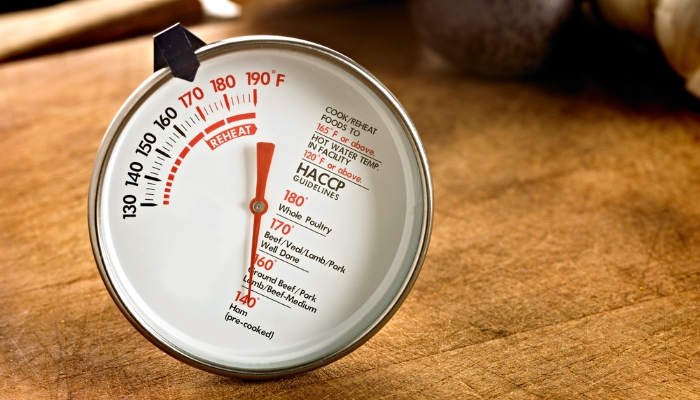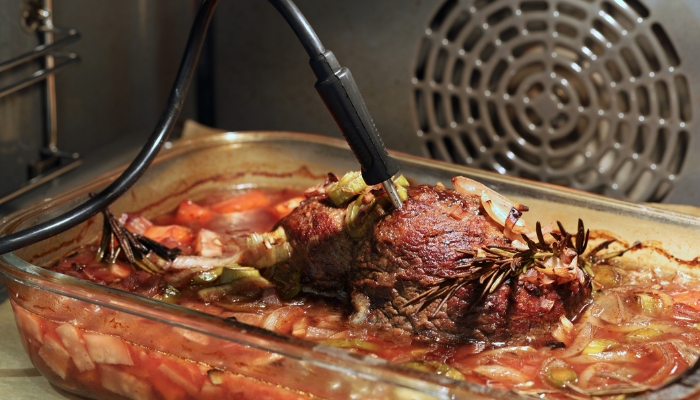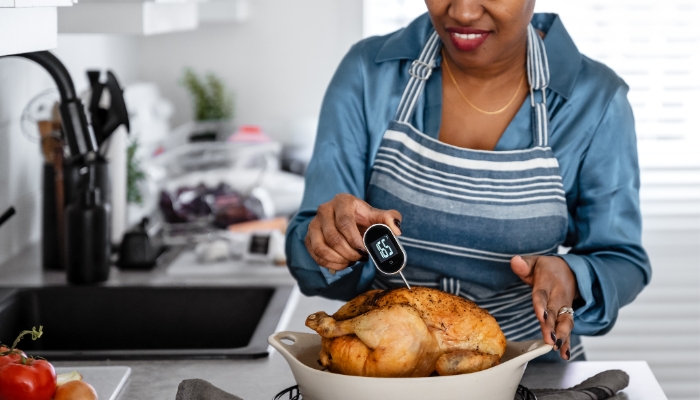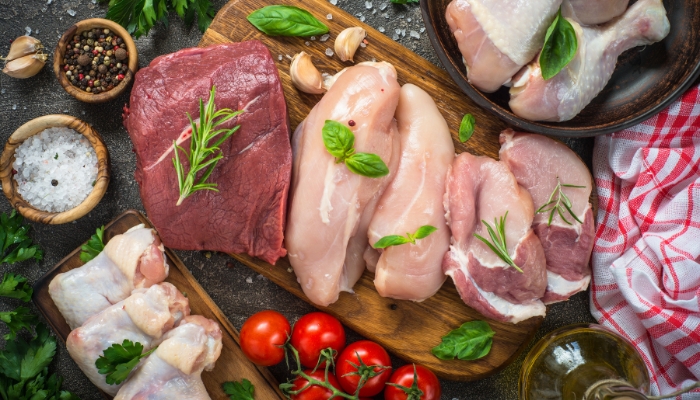Cooking meat to perfection is an art, but even the best chefs rely on a little science to get it right. Ensuring your meat reaches the ideal temperature isn't just about achieving that melt-in-your-mouth tenderness; it's also crucial for safety. Undercooked meat can harbor harmful bacteria, while overcooking can rob it of its flavor and juiciness — yuck!
But with a meat thermometer in your kitchen, those days of guesswork are over! And while it might seem trick to use (especially the ones that come with the oven), they're much simpler than you think — go ahead and see for yourself!
What is a Meat Thermometer?

A meat thermometer is your go-to tool for perfectly cooked meat. It measures the internal temperature, ensuring your dish is both delicious and safe to eat. But not all thermometers are created equal:
- Meat Thermometer: A quick-check tool. Insert, get a reading, and remove. It's not meant for prolonged cooking.
- Meat Probe: Often built into modern ovens, it stays in the meat, giving real-time temperature readings without opening the oven (and letting the heat out!)
Whether using a standalone thermometer or an oven-integrated probe, both guarantee a spot-on cook every time.
Why Use a Meat Thermometer?
If you have a perfectly working oven, do you need a meat thermometer? You absolutely should! When it comes to cooking meat, precision is vital.
- Safety First: Some harmful bacteria can survive in undercooked meat. A thermometer ensures you've reached a safe temperature, eliminating any guesswork.
- Perfect Doneness: Whether you like your steak rare or your chicken just right, a thermometer helps you achieve your desired level of doneness. No more cutting into meat to check!
- Juiciness Preserved: Overcooking can dry out the meat. By knowing the exact temperature, you can ensure your meat remains juicy and flavorful.
Types of Meat Thermometers

With all the types available, navigating the world of meat thermometers can feel challenging. Let's break down the most common types:
- Instant-Read Thermometers: As the name suggests, these give a quick temperature reading when inserted into the meat. They're not meant to stay in the meat while it cooks but are perfect for a speedy check.
- Oven-Going Dial Thermometers: These are designed to remain in the meat while cooking in the oven. They provide a continuous temperature reading, so you can monitor the cooking process without opening the oven door.
- Oven-Safe Programmable Thermometers: These are digital and alert you when the meat reaches a specific temperature. They stay in the meat during cooking, and the display sits outside the oven.
- Pop-Up Thermometers: Often found in store-bought turkeys, these thermometers pop up when the meat reaches a set temperature. They're single-use and specific to the meat they come with.
Each type has its advantages, so the best one depends on your cooking style and needs. Whether you're grilling steaks or roasting a turkey, there's a thermometer tailored for the task!
How to Properly Use a Meat Thermometer

Using a meat thermometer might seem straightforward, but there are some key steps to ensure you get an accurate reading every time:
- Inserting the Thermometer: Always place the thermometer into the thickest part of the meat, ensuring you avoid any bones. Bones conduct heat differently and can give you a misleading temperature.
- Using it in the Oven: If you use an oven-going or oven-safe thermometer, insert it before cooking. This way, you can monitor the temperature rise in real time without constantly opening the oven door, which can affect cooking times.
- Letting Meat Rest: After removing your meat from the oven or grill, let it rest for a few minutes. Then, recheck the temperature. As the food rests, its temperature can rise slightly, ensuring it's perfectly cooked.
Remember, getting the hang of a meat thermometer might take a couple of tries, but once you master it, you'll wonder how you ever cooked without one!
Ideal Temperatures for Different Meats

Cooking meat to the right temperature ensures not only delicious results but also safety. But which are the right temperatures? This quick guide will show you the way!
Beef:
- Rare: 120°F to 125°F
- Medium Rare: 130°F to 135°F
- Medium: 140°F to 145°F
- Medium Well: 150°F to 155°F
- Well Done: 160°F and above
Poultry:
- Chicken & Turkey: 165°F
Pork:
- Medium: 145°F
- Well Done: 160°F
Lamb:
- Medium Rare: 130°F to 135°F
- Medium: 140°F to 145°F
- Well Done: 160°F
Fish:
- Most varieties: 145°F
These are only guidelines; There might be slight variations depending on your oven, cooking method, and personal preference. Always use a meat thermometer to ensure accuracy and safety!
Common Mistakes to Avoid
Navigating the world of meat thermometers can be a breeze, but there are some pitfalls to sidestep:
- Shallow Insertion: Make sure the probe reaches the meat's thickest part without touching the bone. A shallow placement can give a cooler (and inaccurate!) reading.
- Bone Contact: If the thermometer touches the bone one, you might get a falsely high reading.
- Skipping Calibration: Thermometers can lose accuracy over time. Regular calibration, especially after shocks or temperature extremes, keeps it precise.
- Over-Relying on Pop-Up Timers: These built-in poultry timers are handy but not always spot-on. Always double-check with your meat thermometer.
- Not Resting the Meat: Meat's temperature can rise even after it's out of the oven. Let it rest, then recheck the temperature before serving.
Pro Tip: To maintain it, make sure to clean the thermometer after every use properly, store it in a protective sleeve, replace the batteries regularly, and keep it away from extremely hot or cold environments for extended periods!
Cooked to Perfection

There you have it, the ins and outs of using a meat thermometer to ensure every meal is a masterpiece. Remember, it's not just about taste; it's about safety, too. And if you're looking to elevate your cooking game even further, don't forget to check out the top cooking appliances we have at Watson's Furniture, Flooring & Appliances.
Got questions or need some hands-on advice? Give us a call or swing by. We're always here to help you cook up a storm!